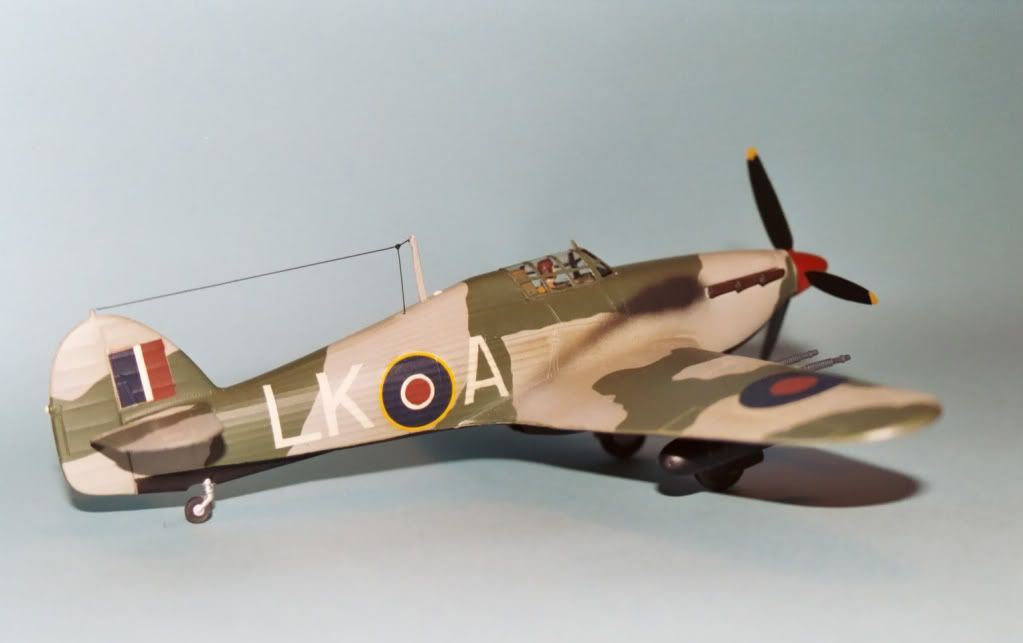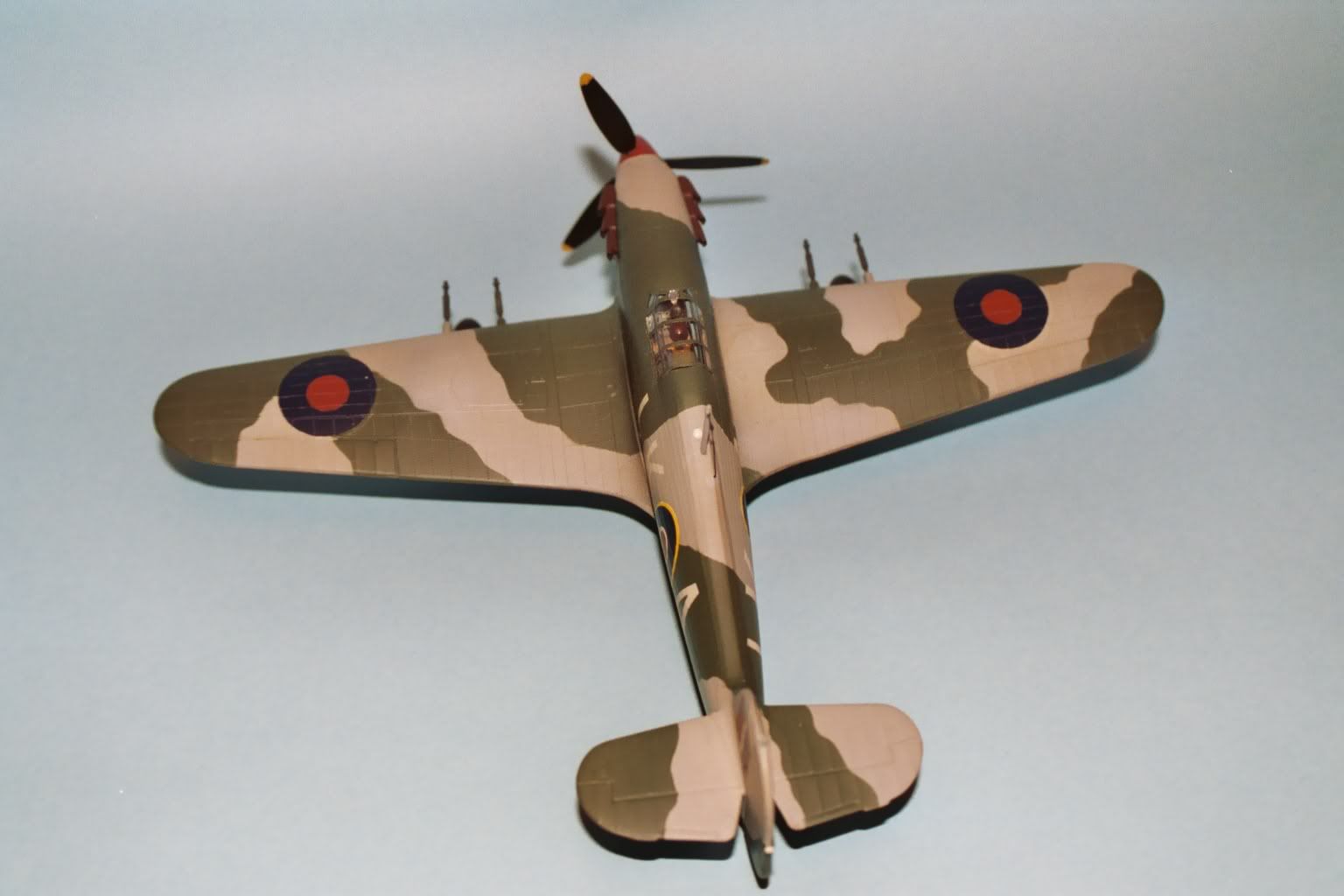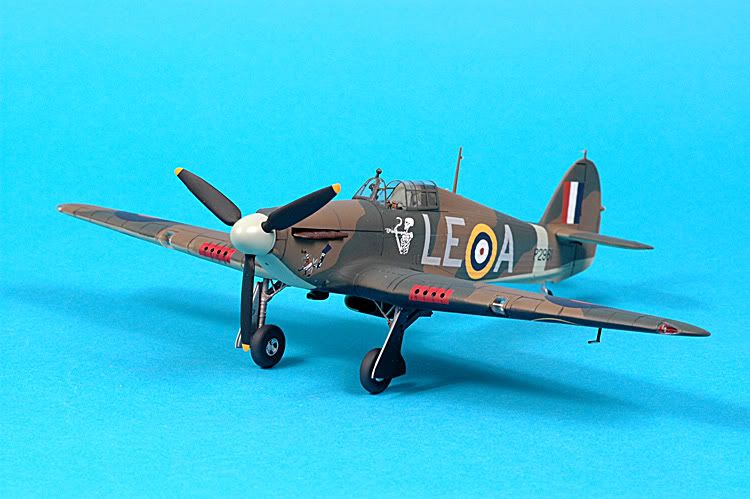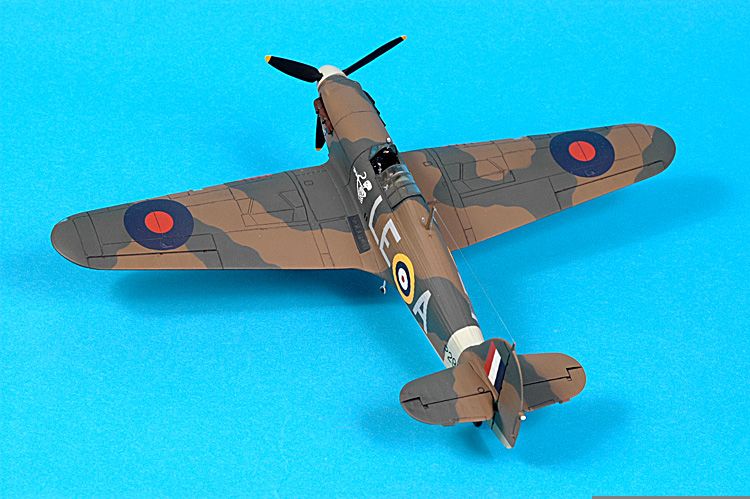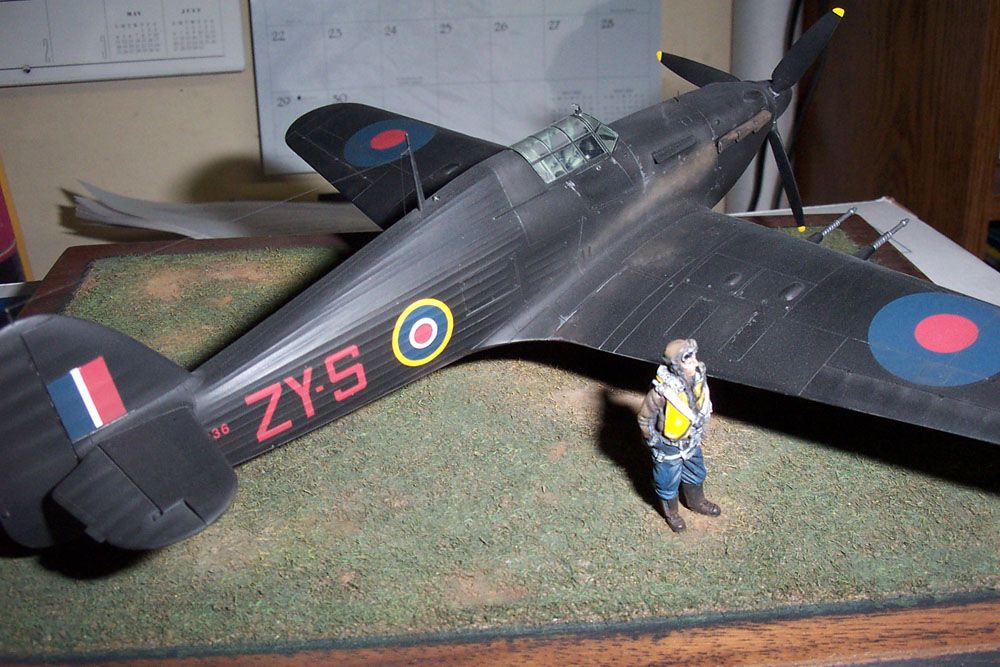Well I figured since for the last aircraft of the week I did three aircraft I could take three weeks off[:D] So I did. But now it is high time I get back to buisness. Instead of doing a poll like i normally have done I decided that I would like to pick out an aircraft so here it is the RAFs Hawker Huricane

HAWKER HURRICANE
The Hawker Hurricane was a major milestone in the evolution of British fighter planes. Monoplanes weren’t new to the type, but the Hurricane set new standards of armament and performance in one stroke. When it appeared in 1935, with eight guns, it was the world’s most heavily armed fighter, and it was Britain’s first to exceed 300mph.
Delivery of the Hurricane to the squadrons began at the end of 1937, and in 1940, the plane went on to play a major role in the Battle of Britain. Although much of that glory must be shared with the Supermarine Spitfire, the Hurricane did the majority of the defensive work. There were 32 Hurricane squadrons in the battle (compared to 19 Spitfire squadrons), and the Hurricane’s simple structure enabled damaged aircraft to be repaired more quickly. Its easy-maintenance features also reduced turnaround time.
Design of the Hurricane began in January 1934, as a private venture by the Hawker Aircraft Company of Kingston-On-Thames, when Sidney Camm became aware of a new 910hp Rolls-Royce engine that was being developed. Camm sought to design a new monoplane to capitalize on this advanced engine, which was later ordered into production as the famous “Merlin.”
Previous Hawker fighters had all been biplanes, and the new Hurricane was a prime example of a transitional design. The details of the fuselage, tail, nose and radiator of the monoplane closely resembled those of the biplanes, but its major difference was the fitting of a metal-frame, fabric-covered monoplane wing that contained an inward-retracting landing gear. In September 1934, Hawker showed drawings of the new design (which used two nose guns and one gun in each wing) to the Air Ministry. An official specification was written to cover the design, and on January 10, 1934, a contract for a prototype was awarded.
During construction, the armament was revised to use eight .303-rifle-caliber machine guns that were entirely enclosed in the thick wing. The prototype flew on November 1, 1935, and demonstrated a high speed of 315mph at 16,200 feet (5,000 meters). Production orders followed for a total of 3,759 Hurricane Is, and later models brought the total number of Hurricanes to 14,557.
Early production Hurricanes were fitted with 1,030hp Merlin II engines that drove two-blade, fixed-pitch, wooden propellers, but these were soon replaced with variable-pitch, three-blade metal units. Production was increased by building Hurricanes at the Gloster Aircraft Company and the Austin Motor Company in England and at the Canadian Car and Foundry Company in Canada. Licenses to build Hurricanes were also granted to some “friendly” countries, but the outbreak of war canceled most of these projects.
During the production of the Mark I, the Hurricane adopted several significant state-of-the-art improvements. The wing structure was changed to all-metal; constant-speed propellers were adopted, and armor for the pilot and fuel tanks was added. For service in North Africa and in the Middle East, a “tropicalized” version was developed that featured dust filters for the engine air intake and other details that were dictated by operations and maintenance in desert conditions. Hurricanes were also adapted to naval operations from aircraft carriers by the fitting of arrester hooks, and operated under the name “Sea Hurricane.”
The appearance of the 1,280hp Merlin XX engine with a two-stage supercharger resulted in the major Hurricane model-the Mark II-which had many variants, mostly in the arrangement of armament. Two different wings were built, one for 12 .303 guns (Mark IIB) and the other for four 20mm cannon, plus hard points for up to 500-pound bombs (Mark IIC). The Mark IIA had the original eight-gun wing, the Mark IID had two 40mm cannon that were mounted below the wing.
There was to have been a British-built Hurricane III with the American Packard-Merlin engine, but it was never produced. The Hurricane IV (originally the “Mark IIE”) with a 1,620hp Merlin 27 engine, was designed for low-level attack missions with a wing that could be fitted with two 40mm cannons, bombs, drop tanks or rockets. There were only two Hurricane Vs. These were Mark IVs that were fitted with 1,635hp Merlin 32 engines and four-blade propellers. After testing, they were reconverted to Mark IVs.
In Canada, use of the Packard-Merlin 28 engine and American Hamilton-Standard propellers in the basic Mark IIB airframe resulted in the Mark X in 1941. The Mark XI was similar except for its Canadian equipment. The Mark XII used the Packard-Merlin 29 and had a 12-gun wing; the Mark XIIA had eight guns.
Altogether, Hawker built 9,900 Hurricanes; Gloster, 2,749; Austin, 300; Canadian Car, 1,606 and Avions Fairey (in Belgium), two. The last Hurricane built, a Mark IIC, was delivered by Hawker in September 1944.
As a fighter, the Hurricane was generally surpassed by the German Messerschmitt 109. As the Hurricane was improved, so was the 109. The Hurricane was outclassed as an interceptor fighter by mid-1942, but with the new wing and heavier armament, it became a highly successful low-level fighter-bomber and tank buster.
Some 2,952 Mark IIs and IVs were supplied to Russia during the War, and this produced quite an oddity. Hawker sold 12 Hurricanes to Finland in January 1940 during that country’s first war with Russia, and by the time of the second, or “Continuation,” war, the Russians also had Hurricanes. Further, in a reversed Lend-Lease operation, Britain supplied Hurricanes to American fighter squadrons that arrived in Europe and North Africa but were not yet equipped with American fighters.
SPECIFICATIONS
Span: 40 ft.
Length: 31 ft. 4 in.
Height: 13 ft.
Weight: 7,200 lbs. loaded
Armament: Eight .303-cal. Browning machine guns
Engine: Rolls-Royce Merlin XX of 1,260 hp.
Crew: One
PERFORMANCE
Maximum speed: 340 mph.
Cruising speed: 238 mph.
Range: 468 miles with internal fuel only; 1,090 miles with two 90 gal. ferry tanks
Service Ceiling: 35,000 ft.
MARKINGS







DRAWING




